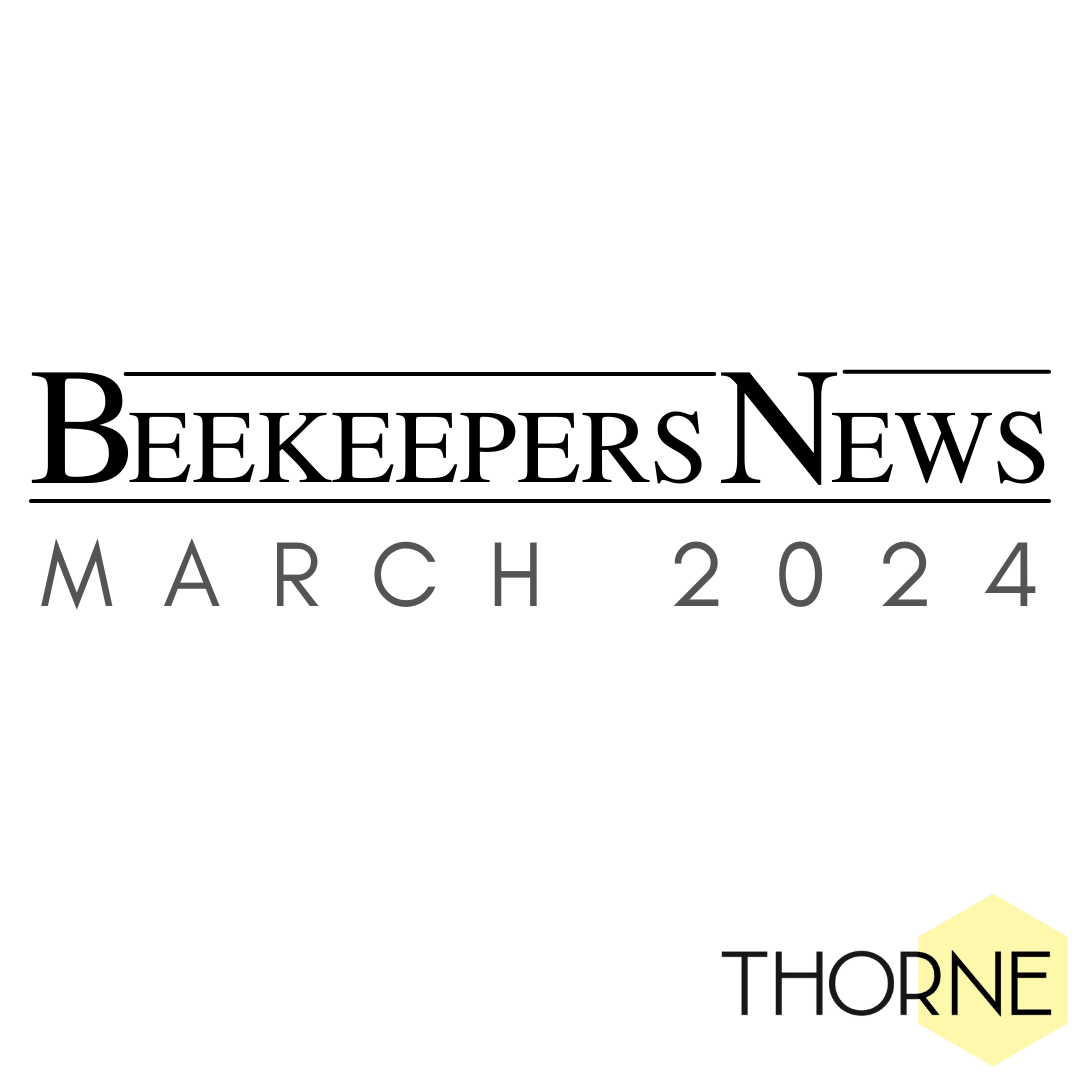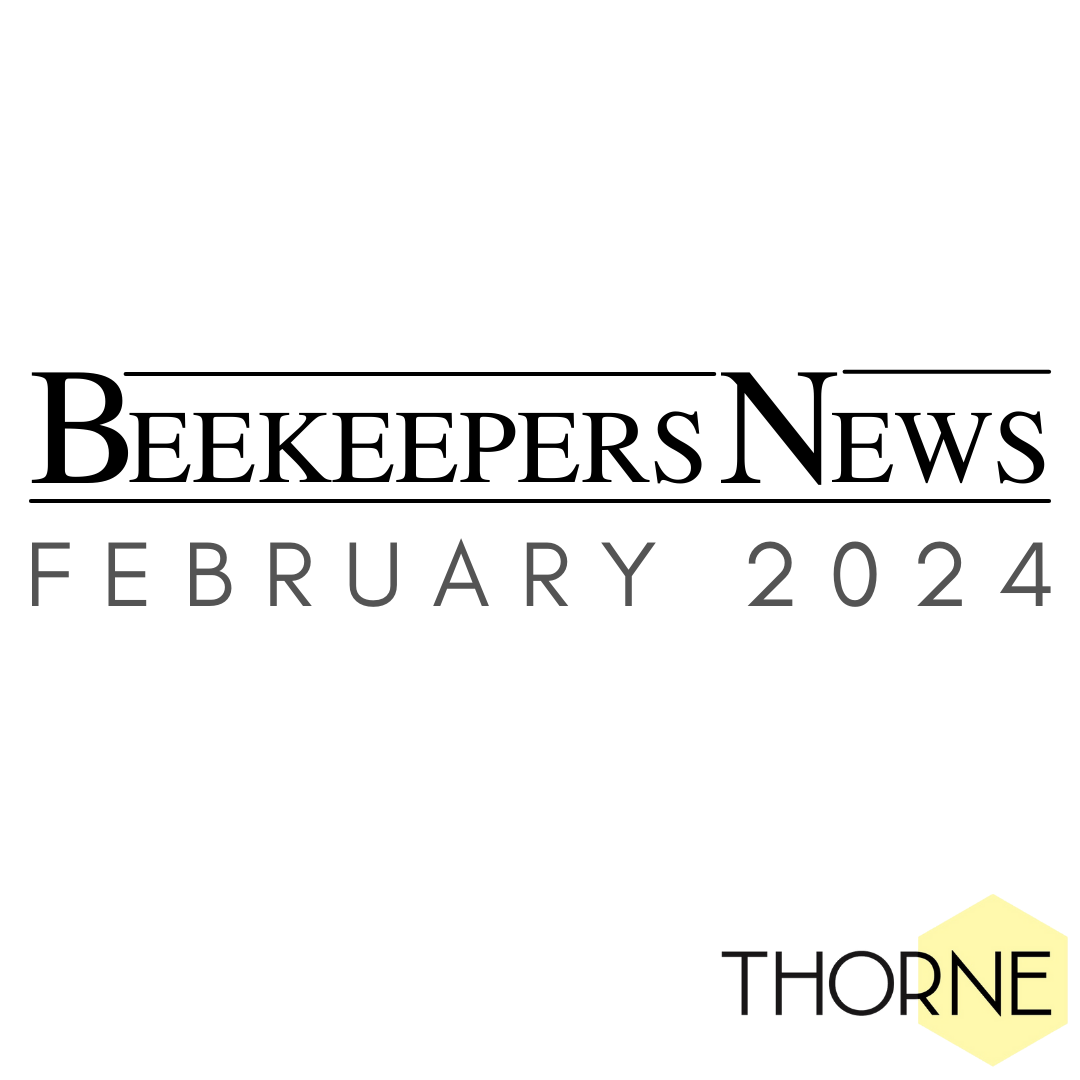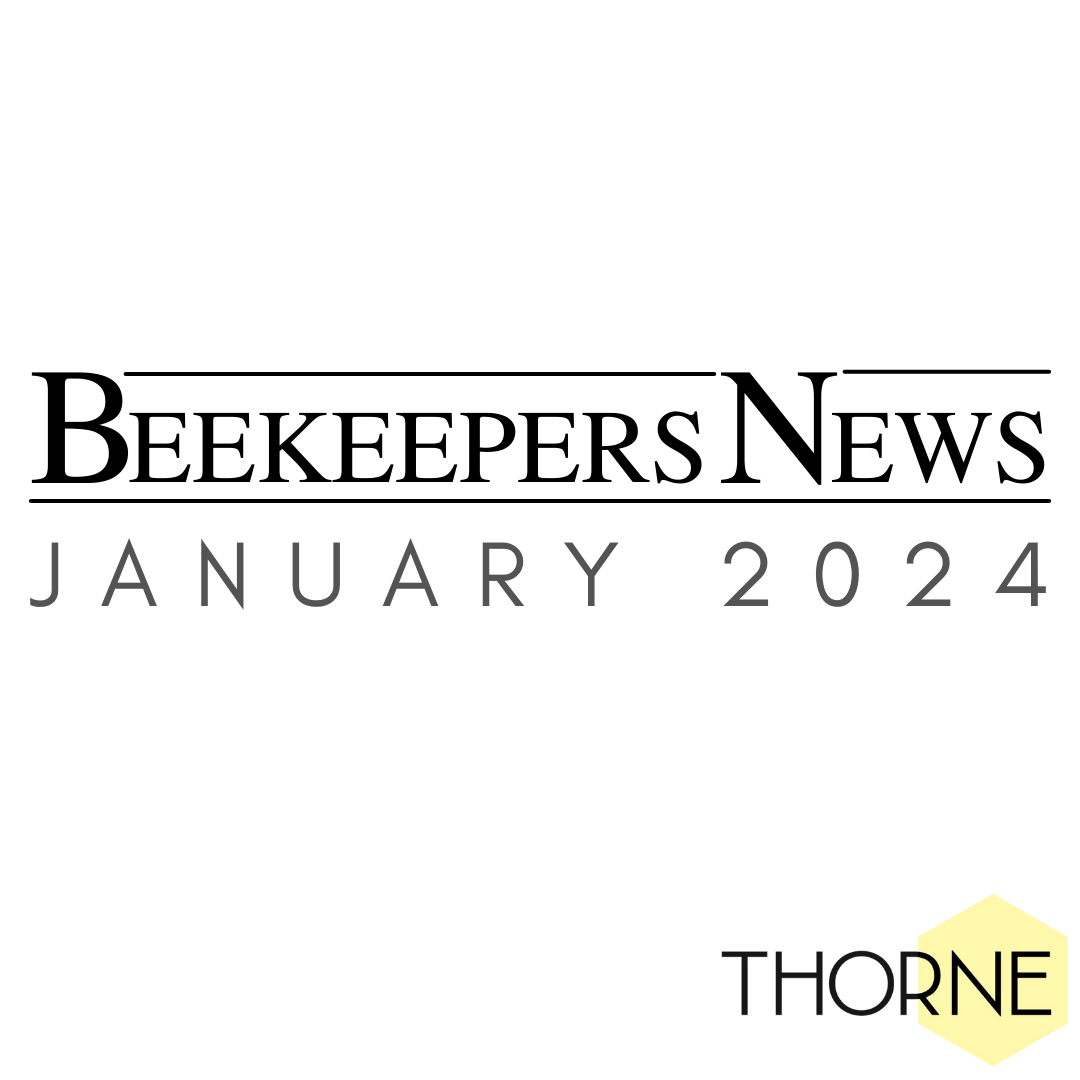August Roundup
During the later summer months our focus turns to our branch sale days. The first of these is the Newburgh Sale day – held this year on the 9th and 10th August. Driving wind and rain on the first day didn’t stop our Scottish customers turning out in force. Our large shop and warehouse in Newburgh mean the whole sale is undercover, which was incredibly welcome this year. Thank you to all our customers and of course Brian and the team in Newburgh. A few photos are below.
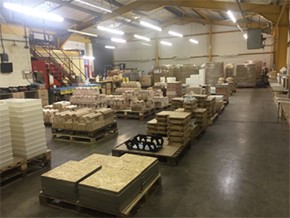
We held our Windsor Sale Day yesterday (7th September). Even if you have missed the sale day why not come along and have a look at our brand-new shop. It is much bigger and full of our entire range of equipment.
The Stockbridge and Devon sale days will be held later this month.
We have just started stocking VarroMed from BeeVital. This is the successor to the incredibly popular Hive Clean. VarroMed is a natural product made from oxalic acid dihydrate and formic acid. It comes in a 555ml bottle, costs £30 and can be easily trickled on to the bees. For more information click here.
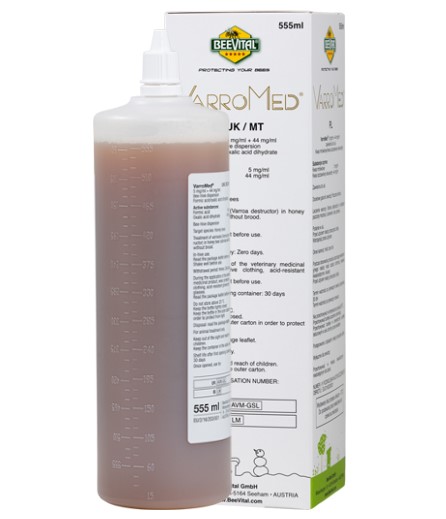
Ask the Expert
Wax Moth
Unfortunately, Certan has been withdrawn from sale until further notice. The manufacturer, Vita, are currently developing a new product that we hope will be available soon. The choices to combat wax moth are therefore very limited. A brief description of wax moth and a couple of different treatment options are shown below.
Wax Moth
There are two types of wax moth that can cause problems within the beehive, the lesser and the greater wax moth. They are not generally a big problem for strong, healthy colonies but can be problematic for weaker colonies. The larvae of both species can cause damage to comb by burrowing through the wax and feeding on impurities, especially in old brood combs. Greater Wax Moth will also make furrows in wood where they have built their pit to pupate. The most obvious sign of infestation is a white silk trail left by the larvae who travel below the brood cappings. It is possible to catch these larvae but you have to be quick because they move fast!
In extreme cases the whole of the comb will be destroyed. Boxes that are lightly infested may be placed on top of a strong colony to clean out but combs that are heavily infested and beyond treatment should be burned.
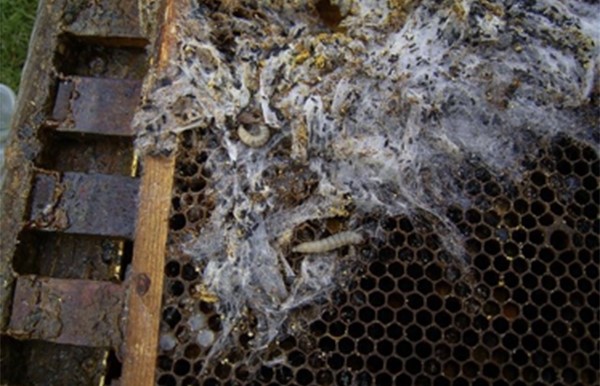
Wax moth larvae and webbing image above courtesy The Animal and Plant Health Agency (APHA), Crown Copyright.
Infestations are generally caused by unhygienic beekeeping practices, such as leaving burr comb and exposed supers or broods with drawn comb lying around the apiary.
Now Certan is no longer an option there are only two treatment options available within the UK. Both treatments can be used on drawn honeycomb supers or brood. The most common is to treat supers as brood boxes tend to have bees in over winter.
These methods are outlined below:
Sulphur strips (sulphur dioxide)
Burning sulphur strips will kill all stages of wax moth present at the time but does not guarantee long lasting protection. It will also prevent stored pollen from going mouldy.
HOW TO USE:
Place a piece of newspaper on a concrete or wooden floor, preferably outside.
Stack 6 supers with empty combs on top of the paper and seal round the sides with tape.
Place an empty brood body on top of the stack.
Place a sulphur burner inside the brood body on top of the super frames.
Hang 2 sulphur strips in the sulphur burner and fold the strips in half.
Light the strips and quickly close the burner. When lit, the sulphur dioxide sinks through stacks of supers, treating all super frames.
Place a sealed hive roof over the brood body and leave quickly.
Repeat every 4 weeks whilst in storage and leave for a few days before putting into use.
Safety warning
Sulphur dioxide is toxic when inhaled so only use sulphur strips outside or in a well-ventilated area. Causes burns. Keep out of reach of children. Use protective clothing and seek medical assistance in case of an accident or feeling unwell.
Acetic acid
Acetic acid can be used to sterilise combs against wax moth, Nosema and chalkbrood. 80% acetic acid should be used with absorbent fume pads as well as proper protective clothing and containers because it is highly corrosive and will burn skin and corrode metal hive parts. Acetic acid cannot be sent but must be collected from one of our branches.
HOW TO USE:
Place an absorbent fume pad saturated with ¼ pint/125ml 80% acetic acid onto the floor. This can be a solid wooden hive floor or any timber or earth floor. Avoid concrete as acetic acid will corrode it. Remove or coat with Vaseline any metal ends or frame runners as it will corrode these parts too.
Place a brood box with frames to be fumigated on top of the fume pad. Then place another saturated fume pad on top of the frames. Do this for each box of frames you wish to treat.
Place a lid on the stack and seal the joints between the boxes with gaffer tape. As an easier alternative, it is possible to stack the boxes inside a wheelie bin liner which provides a good airtight seal.
Leave for 1 week.
Remove the acid-soaked pads carefully and air the boxes and frames for a few days before putting into use.
Safety warning
Acetic acid is highly corrosive and will easily corrode concrete and burn skin. Avoid contact with the eyes and fumes being inhaled into the lungs. Always wear overalls, protective gloves and goggles when using this acid.
Equiptment Focus
Launched at the National Honey Show last year we are now pleased to add our hive barrow and smoker and tool boxes to our range of equipment.
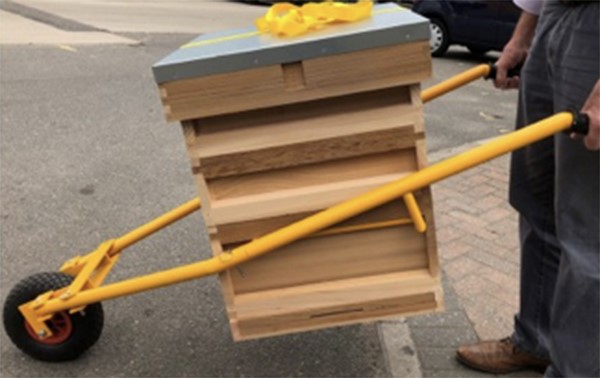
The hive barrow is made from galvanised steel which has been powder coated an attractive shade of yellow! It has a heavy duty, all terrain tyre and can be easily broken down to comfortably fit in the boot of a car. Approach a hive from either side and open one side of the barrow. Close the barrow around the hive and simply lift and move the hive. This is a one-man job but do remember to strap the hive first! The hive barrow can only be used for National hives (including 14”x12” hives) and costs £80. For more information and a short video click here.
We have two different types of smoker and tool box now in stock. Both are made from galvanised powder coated steel.
The Smoker Box, costs £48 and can easily accommodate a large smoker. It has a seal in the lid to stop any smoke escaping, a heavy duty fastening and a secure handle. Safely transport your smoker before and after inspections. For more information and a video click here.
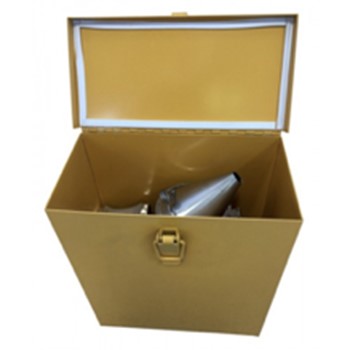
The Smoker and Tool Box can also accommodate a large smoker but has the added bonus of additional storage space for tools and gadgets. Place your hive tools into the four handy slots along the front of the box and carry frame rests and bee brushes in the long compartment on the back of the box. The Smoker and Tool box also comes complete with a separate, removable box for small items such as queen marking pens, cages and catchers. The Smoker and Tool box costs £60. For more information and a video click here.
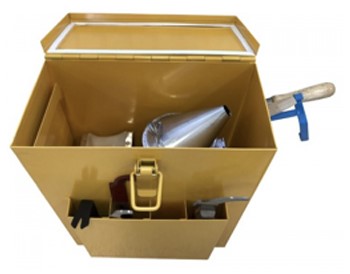
Beekeeping Blog
August 2019
August was a fairly wet month, to say the least! For us beekeepers, it never seems to be ‘ideal’ beekeeping weather; either too wet and cold to open up the hive or too hot to tolerate a beesuit. However, it is important to remember that there are jobs that need doing, whatever the weather. This month, as the wasp situation worsened, we installed ‘wasp-outs’ in some of the hives that looked like they were being targeted by wasps. This is like an entrance block but with extra defences! As you can see from the picture, the ‘wasp out’ has a vented front and entrances either side. This confuses wasps but the bees seem to work it out fairly quickly. The occasional wasp may find its way in, but it does drastically reduce the number that can freely enter and also the amount of space the bees have to guard. Smaller colonies definitely benefit from this little contraption as they are the first to succumb to any wasp invasions.
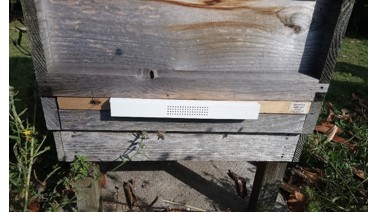
Big news further afield is the confirmed sighting of an Asian Hornet in Tamworth in the last few days. These hornets pose a serious threat to our honey bees so being able to correctly identify them is essential not just for beekeepers but for the general population. In the same vein, it is also very important to be able to distinguish them from a European hornet; this saves experts from wasting time following false leads. You can download an ID sheet and poster from the NBUs website here. We keep Asian Hornet monitoring traps at Rand and empty them regularly. This is important because it means any species you might catch that are not Asian Hornet can be released back into the wild (and yes, that includes the European hornet!). Here you can see we caught some beetles, which we quickly set free.
Another job closer to home and one which is arguably more urgent is to keep the colonies’ stores all stocked up. One major reason our colonies die out at this time of year is due to starvation and this has a lot to do with beekeepers harvesting honey without leaving them sufficient stores or providing them with an alternative food source. However, bees can starve even without the beekeeper’s intervention at this time of year, as many of the flowers that the bees were previously foraging on, are now not in flower. With this in mind, we have fed the bees with Ambrosia syrup using English feeders and an eke. This will, fingers crossed, keep the bees going and give them a good headstart into winter (an unthinkable prospect for us this early in the year, but essential to consider for the bees’ welfare).
In terms of varroa, we have been fairly lucky with the colonies here at Rand. There do not seem to be many hives with indications of varroa, such as Deformed Wing Virus, stunted abdominal growth or Parasitic Mite Syndrome. However, we will inspect the hives again in September and decide then on which treatment we think would work best for us and the bees. Varroa levels tend to increase in Autumn, so it would be unwise to rest on our laurels and say our colonies do not have varroa, because they most probably do!
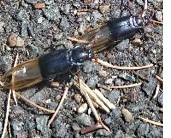
Disease Focus
Baldbrood
Baldbrood occurs when the wax cappings of cells containing developing larvae are uncapped by workers, leaving patches of partially or fully uncapped cells.
Causes
Baldbrood is usually caused by the larvae of Lesser or Greater wax moths tunnelling below the surface of brood comb. They have the potential to damage or even destroy stored comb. The greater wax moth can also cause damage to hive components by boring into the woodwork of the hives.
Symptoms
Normally, baldbrood is seen as small patches of partially or fully uncapped cells, with developing larvae within. This is usually due to wax moth larvae tunnelling under the cappings as they eat their way through impurities contained within the beeswax. Workers will then tear down cell cappings to clean cells out which leaves perforated and exposed cells with developing larvae in. Wax moth damage can also be seen as a white linear webbing along the cappings. The pupae in the cells are rarely damaged, but sometimes become trapped in the cells by the silk threads and die. This condition is known as Galleriasis and is more frequent in newly drawn comb.
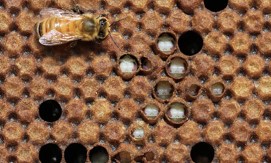
Baldbrood
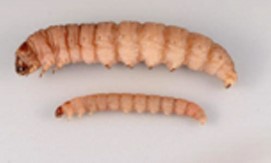
Greater and Lesser Wax Moth larvae
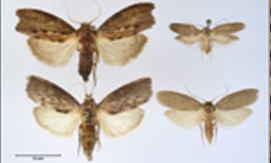
Greater and Lesser Wax Moth
Treatment
Keeping strong colonies of bees will reduce the impact of wax moth in the hive. In the case of the genetic form of bald brood, re-queening will usually resolve the problem. To prevent destruction of stored combs, you can preserve them with sulphur strips or acetic acid.
Bees for Development Update
The Bee Quiz!
Come and see Bees for Development at the National Honey Show (24th-26th October at Sandown Park). We'll be on stand no. 14 during the day. On the Friday night, the great BfD Bee Quiz returns, hosted by the wonderful Bill Turnbull and with supper and a glass of wine provided. See if you can beat your beekeeping peers at some not-so-seriously challenging bee-related questions! Book your tickets here:
Honey Week Uganda
At Honey Week in Uganda in August, Bees for Development ran a workshop with our partner TUNADO to explore the best ways of processing beeswax here. The aim is to enable small-scale beekeepers to profit from selling their beeswax, which is not used to its full potential in Uganda, and which can fetch a high price. Participants in the session were judged on the quality of beeswax coming from their test methods, and the results will inform how production is done here in future. (photo below)

National Honey Show News
With the summer racing by and the show fast approaching, the deadline for the ‘early’ classes 95 to 104 & 315 in the Schedule, ie photo, essay, microscope slide classes and *** NEW *** newsletter class entry forms must be in to Jill, our entries sec entries@honeyshow.co.uk by the 7th and then entries themselves with the convener by the 23rd September. Details will be given to you after you’ve sent in the entry form.
Do send entry forms for other classes as soon as you can but by the closing date of 7th October. More details on the website, and in the Schedule, which has already been posted to members.
There is no charge for entries from show members, or for all junior entries. We hope to encourage the young and curious to find out more and get involved with the show. As well as the opportunity to enter special junior classes in the show, there will be some activities for children throughout the show, and a special new ‘Sticky Festival’ on the Saturday 26th October. Bring the children along for a free, indoor, educational and fun filled programme of activities. These are planned for the upper foyer area, separate from the lecture, workshop, exhibition and trade areas.

Upcoming Events
Stockbridge Sale Day – Saturday 21st September
Devon Sale Day – Saturday 28th September
Rand Open and Sale Day – Saturday 12th October
National Honey Show – 24th-26th October



